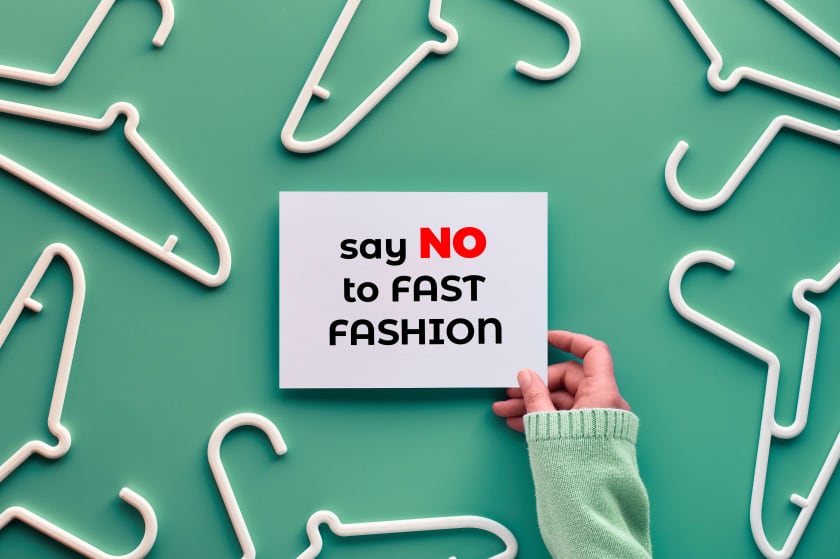The Fight Against Fast Fashion



Summary: To comply with the surge in consumer demand, fashion brands are opting for sub-optimal working conditions for the workforce. Excessive use of polyester is polluting the environment, and copious consumption is depleting the planet’s resources. Brands need to take corrective measures with immediate effect to stay afloat and relevant in the years to come.
The last decade has seen significant changes in the way clothes are getting manufactured, shipped, sold, and used. These changes can be attributed to the now all-pervasive "fast fashion" phenomenon. Fast fashion can be defined as the market forces where mass-market brands increase the production of cheap fashion lines to fulfill the demand of quickly changing trends among customers.
Understanding the fast fashion landscape
The past had witnessed fashion production following the seasons, namely spring, summer, fall, and winter, that required quarterly production cycles. Today, it is not an uncommon practice for manufacturers to introduce new products multiple times in the span of a single week!
Let us take a minute to understand the "fast fashion" landscape. Of the entire world population, 1 of every 6 people works in the fashion industry. As many as 4 of 5 fashion workers happen to be women and 9 of 10 fashion brands do not pay a living wage. The fashion industry causes 20% of global water pollution, and nearly 35% of microplastics lying on ocean beds are coming from the fashion industry.
It is not the concern of environmentalists alone
This "fast fashion" production cycle may look like a positive development initially, but for the entire supply chain, it is causing more problems than solving them. It is not for the environmentalists alone to wage the war for sustainable clothing.
New fashion startups and mature brands should have a complete awareness of the various pitfalls that fast fashion is causing. They should take remedial steps responsibly and quickly before the menace becomes too big to have any sort of solution.

Let us look into the three major pitfalls of fast fashion and how brands need to tackle them.
1. Brands need to take up the ethical issues
There are numerous reports available in the public domain that suggests exploitation and mistreatment of the workforce are the norms now. These include poor work conditions, forced overtime, and low wages.
Fashion brands need to immediately take a moral stand of not engaging suppliers who make their workers perform duties in such exploitative conditions. They need to conduct written and physical audits to ensure that work conditions have been sanitized across these dimensions. During the course of production, they need to constantly keep looking for breach signs and quickly take remedial course-correction steps. Big brands like Walmart and H&M have initiated deeper engagement with the vendors and made compliance mandatory for them.
2. Concerted action needed to tackle the polyester menace
Our rivers, lakes, and oceans are getting deeply polluted by microfibers from synthetics like polyester finally ending up on the beds of water bodies.
Fashion brands should make a conscious choice of only opting for sustainable production and should go for partners who have attained such certifications. Vegan fabrics are available that are made up of completely bio-degradable items such as hemp soil, organic cotton, bamboo, and organic linen. Brands should make a shout-out to customers and make them believe that they are not adding to pollution.
A good case in point is sports brands Nike and Adidas, which have announced plans to phase out the use of virgin plastics.
3. Fashion structure should adopt sustainable clothing

In this fast-paced world, clothing shelf life is not the same as it used to be for people’s wardrobes 20 years ago. The flip side of this shift is that during down cycles, massive excess inventory gets created with no clear-cut measure of disposal. The world is producing more clothes than it needs.
Brands should use the power of data and analytics at the beginning of the product life cycle to ensure clothes are produced as per the demand. Consumers have a big role to play in encouraging sustainable clothing. Brands such as Reformation and Patagonia encourage consumers to wear clothes for a longer time, thereby prolonging their journey to landfills.
How digital fashion could replace fast fashion?

The rise of digital fashion could mean the end of fast fashion. Digital fashion includes everything from clothes that are designed using computer-aided design (CAD) software to shoes that are 3D-printed. The advantages of digital fashion over fast fashion are clear. For one, digital fashion is far more sustainable. Fast fashion is notoriously unsustainable, as it relies on cheap labor and materials, and generates a lot of waste. Digital fashion, on the other hand, can be produced using sustainable materials and methods.
Moreover, digital fashion is more personal. Fast fashion is all about mass production and mass consumption. But with digital fashion, each garment can be tailored to the individual consumer's taste. Digital fashion is still in its early stages, and it remains to be seen whether it will completely replace fast fashion. But it's definitely a more sustainable, innovative, and personal way of producing and consuming fashion.
An all-inclusive fight for sustainable clothing
Fast fashion is becoming the new normal for the fashion industry and is making it more chaotic and polluting. It is not the fight of agencies like the United Nations Environment Programme (UNEP) or NGOs such as Greenpeace alone. The efforts for a greener planet would require integrated efforts, including the active participation of apparel manufacturers and consumers.
Fashinza firmly believes that fashion should be sustainable and ethical. We work with manufacturers who are committed to reducing the negative environmental consequences of fast fashion by recycling clothing materials, investing in environmentally friendly raw materials, and providing artisans with a fair share of profits.
Partner with Fashinza and join us in our journey toward a greener fashion.
Key Takeaways
· Both fashion players and consumers have a responsibility to adopt sustainable practices.
· Technology can be used to fight fast fashion, and the use of sustainable materials should now be deemed mission-critical.



















